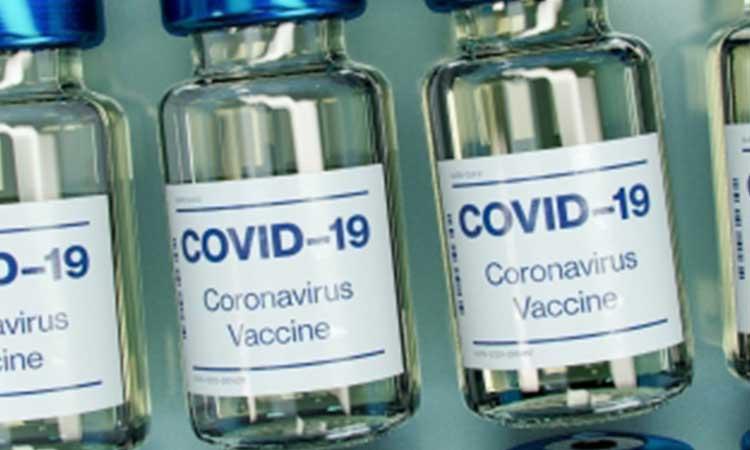New Covid variants XBB.1.5, EG.5 and BA.2.86 have led to a resurgence in cases of Covid-19, particularly in the US, Europe and Asia.
In late August, the European Centre for Disease Prevention and Control (ECDC) first reported an increase in transmission of Covid in the countries, particularly among people aged 80 and over.
Again in September, the ECDC raised concern over the “noticeable increase in signals of SARS-CoV-2 transmission” in European countries, among people aged 65 and older.
The agency said the rise in cases deviates from previously very low levels, and as per data from 24 countries there has been a rise in 14-day case rate.
Hospitalisation and intensive care unit admission levels were stable, but a few countries reported a rise in death rates from Covid, especially among older people. In total, 135 deaths were reported by 18 countries.
“SARS-CoV-2 continues to acquire mutations that enable its circulation at unpredictable times throughout the year. Recent transmission increases have coincided with the emergence of Omicron sub-lineages, particularly the XBB.1.5-like variants,” the ECDC said in its latest epidemiological report.
“While global case detections of BA.2.86 are limited, low-level community transmission is suspected in multiple countries. BA.2.86 is highly divergent from currently circulating SARS-CoV-2 strains, raising concerns of increased re-infections if it outcompetes existing variants,” it added.
Particularly affected is the UK, which is seeing a significant rise in Covid cases owing to both BA.2.86 and EG.5.
A recent update by the UK Health Security Agency (HSA), showed that of the new 34 cases of BA.2.86, 28 were reported from a single elderly care home in Norfolk -- an early indicator that the variant may be sufficiently transmissible to have impact in close contact settings.
In the recent weeks, there have been four studies from the US, China and Sweden that claim that BA.2.86 is not severe. These confirmed that the subvariant is less contagious as well as immune evasive and also less transmissible than XBB and EG variants.
“The news is better than I was expecting, and makes me more encouraged that the new upcoming vaccine will have a real benefit against the current dominant variant (EG.5) as well as BA.2.86,” Dr. Ashish Jha, former White House Covid-19 response coordinator, in a post on X.
“One possible scenario is BA.2.86 is less transmissible than current variants, and so never spreads widely,” evolutionary biologist Dr. Jesse Bloom, from the Fred Hutch Cancer Centre in the US was quoted as saying to The New York Times.
“However, there is also a chance that the variant will spread widely -- and we will just have to wait for more data to know.”
Meanwhile in Asia, Japan and South Korea have also confirmed the presence of BA.2.86. Some have also found it to be wastewater samples.
Earlier in August, Singapore’s health ministry said about 18 per cent of Covid-19 community cases in the country were infected with Eris.
Several countries, including the UK, France, Singapore plan to launch vaccinations, as the US, to tackle the new variants.
The new Covid vaccines target the XBB.1.5 variant, which was dominant when vaccine makers began to formulate and test a new version.
US drug maker Moderna said that its updated Covid-19 vaccine contains spike proteins for the XBB.1.5 sublineage of SARS-CoV-2 to help prevent the disease in individuals 6 months of age and older.
Covid's saga of new variants tells us it's not going away
Although the World Health Organisation (WHO) in May declared that the Covid pandemic is no longer a public health emergency, newer variants continue to emerge and drive infections.
While some of the newer variants are highly transmissible and are infecting more people, none have been as virulent as Omicron -- which first surfaced in November 2021. The new variants include the XBB, EG.5, BA.2.86, and FL.1.5.1.
The XBB variants of Omicron began circulating in the late summer of 2022. Its sublineage XBB.1.16 was in March 2023 designated a variant under monitoring (VUM), then upgraded as a Covid-19 “variant of interest” (VOI) due to its “sustained increase” and “growth advantage” reported from several countries in April by the WHO.
The variants led a significant uptick in cases, while also evading vaccine-induced immunity, both in India and several countries, including the US, the UK and others.
The WHO noted that XBB.1.16 had become one of the fastest growing variants. But research suggested that XBB1.16 did not appear to cause more severe illness, and it seemed to be responsive to current antiviral treatments.
EG5.1, which first appeared in April, was added to the list of VUM by the WHO in July. Nicknamed Eris, EG.5.1 showed additional mutants on the spike protein S:F456L and S:Q52H.
Its speed of transmission was found to be 45 per cent more than XBB.1.16. It has so far been identified in more than 50 countries worldwide.
In the US, the EG.5 variant is estimated to be the "dominant" strain because it makes up the largest share of new cases of Covid compared to other variants. On September 1, the US CDC estimates said it makes up for 21.5 per cent of new cases.
According to a recent study, published in The Lancet Infectious Diseases, EG.5 is spreading rapidly across the globe because of its ability to escape from antibodies.
Scientists from the German Primate Center-Leibniz Institute for Primate Research in Gottingen found that EG.5.1 is not more infectious than its predecessors, meaning it cannot infect host cells more effectively.
However, EG.5.1 can escape neutralising antibodies better than other currently circulating SARS-CoV-2 lineages, giving it an advantage in infecting individuals whose immune systems have produced neutralising antibodies after vaccination or infection.
In August, the WHO also flagged another sub-variant of Omicron BA.2.86, dubbed as Pirola. BA.2.86 was first detected in Israel and has spread to about 10 countries.
The variant has shown large mutations -- more than 30 in the spike protein -- similar to Omicron, increasing fears of fresh Covid cases. After just three cases, WHO declared it a VUM, and also called for closer monitoring of the variant to understand its spread and severity.
The UK Health Security Agency (HSA) last week had reported 34 cases of BA.2.86, 28 of which were reported from a single elderly care home in Norfolk -- an early indicator that the variant may be sufficiently transmissible to have impact in close contact settings.
“One possible scenario is that BA.2.86 is less transmissible than the current variants, and so never spreads widely,” Dr Jesse Bloom, was quoted as saying to The New York Times.
“However, there is also a chance that the variant will spread widely -- and we will just have to wait for more data to know.”
FL.1.5.1, dubbed "Fornax", is the next-largest strain at 14.5 per cent of US infections, the CDC estimated as of September 1.
FL.1.5.1 as well as EG.5 are XBB variant descendants that share a mutation known as F456L. This mutation appears to be helping them spread more than other virus siblings.
Amid all these variants, there is no evidence to suggest that infection with one of the emerging variants is associated with more severe disease or a reduction in vaccine effectiveness when compared to other currently circulating variants. But these suggest that Covid is here to stay.
“I see so many people say: ‘Remember, Covid’s not over'," Jennifer Nuzzo, an epidemiologist and director at Brown University’s Pandemic Center, told STAT.
“Covid is never going to be over. You need to set expectations accordingly. It is never going to be over.”
Also read | Facebook failed to control Covid misinformation due to its design, reveals study
Also read | India capable to develop vax for any new Covid strain: ICMR


















